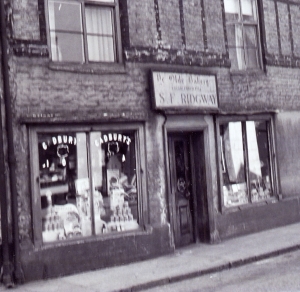
Wem has relied on generations of family traders and the High Street shops changed very little from before the first world war to the sixties and seventies. Between the wars, walking from the now Wem Book Shop, along the High Street to the Maypole Corner you could have browsed in over thirty shop premises and buy all your clothes and household needs. Shops I'm sure you'll remember were Ridgeways, bakers; Misses Hopes, haberdashers; Miss Burrows, china; Tudors, bakers; Kynastons, hardware. Across the street, Rutters bakers, further down Rutters butchers, Moss's cycles, Hiltons shoes. Then Dawes and Heath, pork butchers; Butlers, men's outfitters; Bowens, ladies fashion and much more! Jones, fruit and veg.; Lees, high class grocers; Griffiths, drapers; Mrs Rowlands, sweets; Sands, grocers; Johnson's butchers, Morgans chemist, Ikins, milliners and corsets; Eatons outfitters, Obertelli fish and chips, plus ice cream! Also Morris drapers, Hidens paper shop and many other small shops were just off the High Street.
